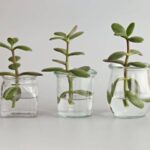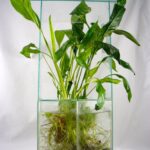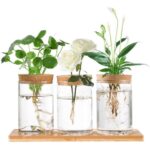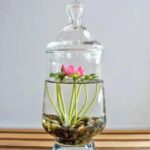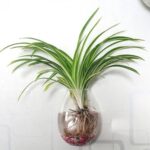Gardening in water is a popular trend that has been gaining momentum in recent years. Growing plants in water can be a fun and easy way to add greenery to your home without the hassle of dealing with soil. Whether you’re a beginner or a seasoned gardener, here is a guide to help you get started with growing plants in water.
1. Selecting Plants: Not all plants are suitable for growing in water. Some popular choices include pothos, spider plant, lucky bamboo, and peace lily. Make sure to choose plants that can thrive in water and are easy to care for.
2. Choosing Containers: When growing plants in water, the container you choose is crucial. Opt for a glass or clear container to observe the roots and monitor the water level. Also, make sure the container has enough space for the roots to grow and thrive.
3. Water Quality: It’s essential to use clean, filtered water when growing plants in water. Avoid using tap water that contains chlorine or other chemicals that can harm the plants. If possible, let the water sit out for 24 hours to allow the chlorine to dissipate.
4. Changing the Water: To ensure the plants stay healthy, it’s important to change the water regularly. Replace the water every two weeks or when it starts to look cloudy or dirty. This will help prevent the growth of algae and keep the plants thriving.
5. Providing Light: Just like plants grown in soil, plants grown in water also need light to photosynthesize. Place your plants in a location where they can receive indirect sunlight to promote healthy growth. Avoid placing them in direct sunlight to prevent the roots from getting damaged.
6. Fertilizing: While plants grown in water can derive nutrients from the water, it’s still important to fertilize them occasionally. Use a diluted liquid fertilizer specifically formulated for hydroponic plants to provide essential nutrients for growth.
7. Troubleshooting: If you notice any yellowing leaves, root rot, or algae growth, take action immediately. Check the water level, change the water, trim any damaged roots or leaves, or adjust the amount of light the plants are receiving to address any issues.
Growing plants in water can be a rewarding and enjoyable experience. By following this guide, you can create a beautiful water garden in your home with healthy and thriving plants. Experiment with different plant varieties and containers to create a unique and personalized display that will brighten up your living space. So, grab your favorite plants, a container, and start growing plants in water today!
 redboth.com Decoration ideas for your home
redboth.com Decoration ideas for your home










